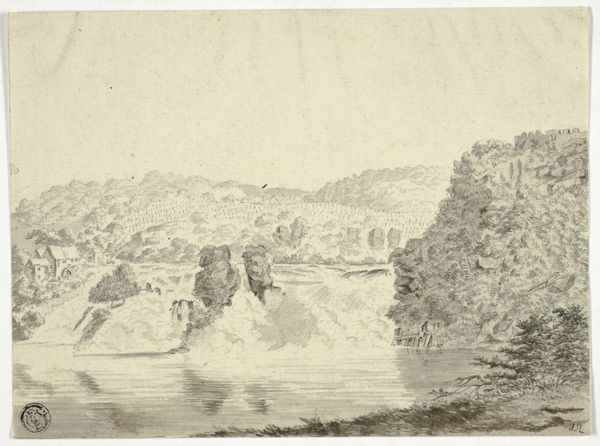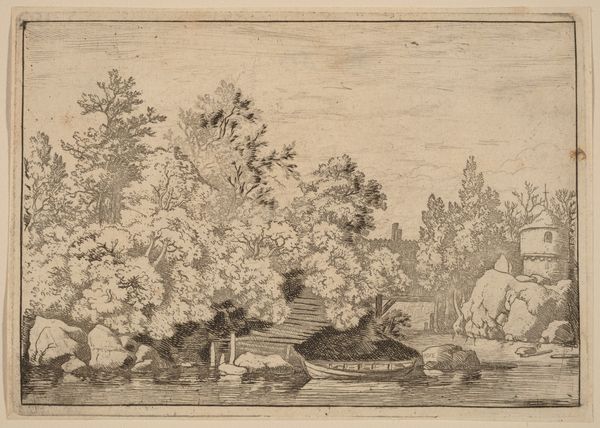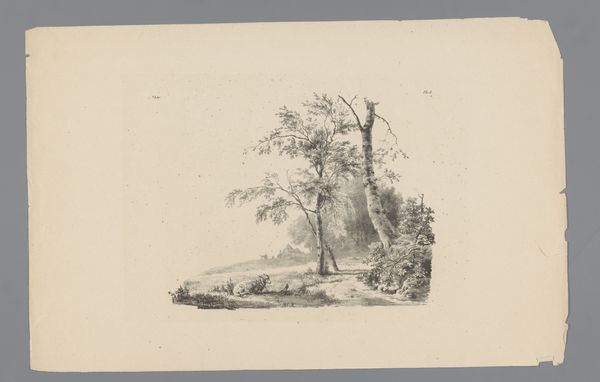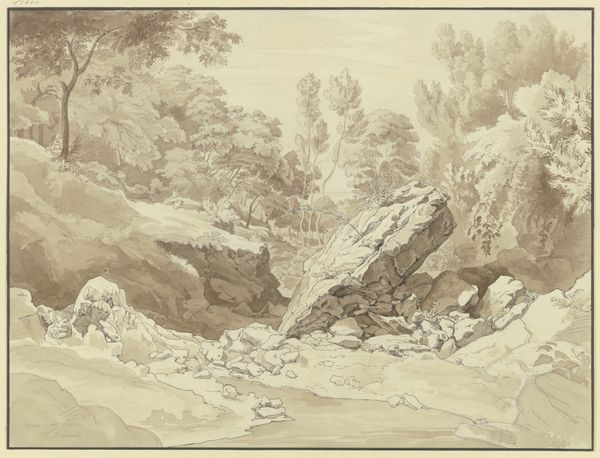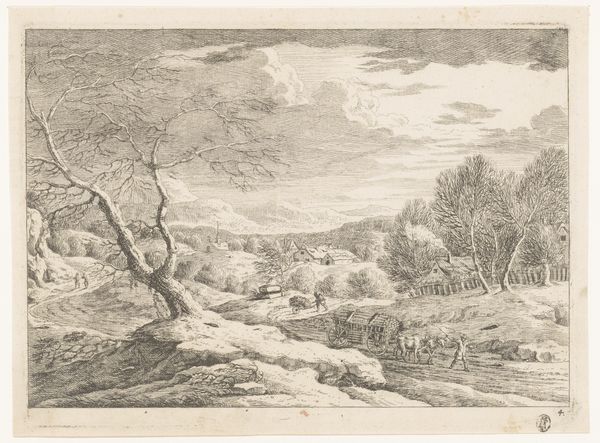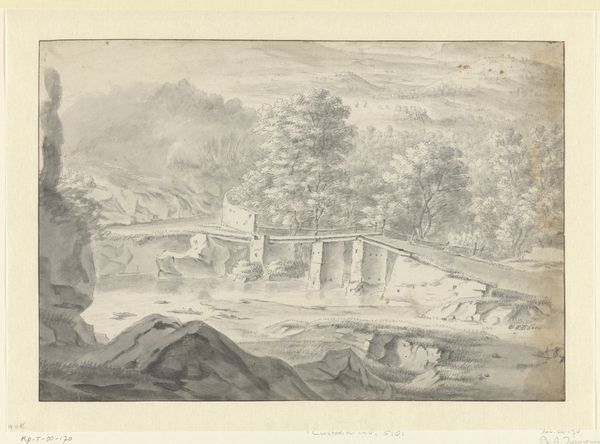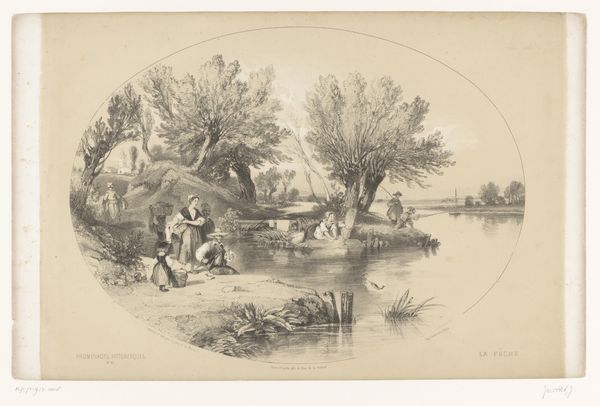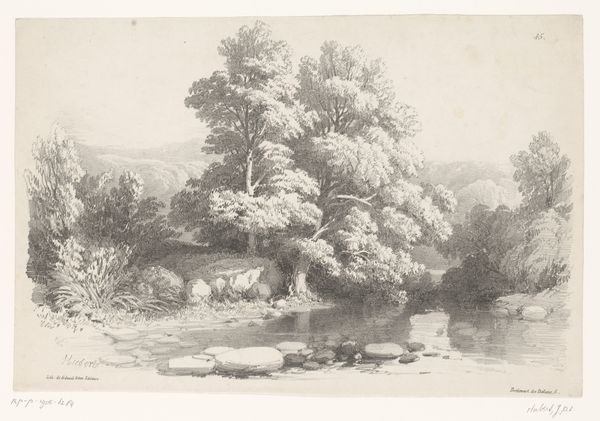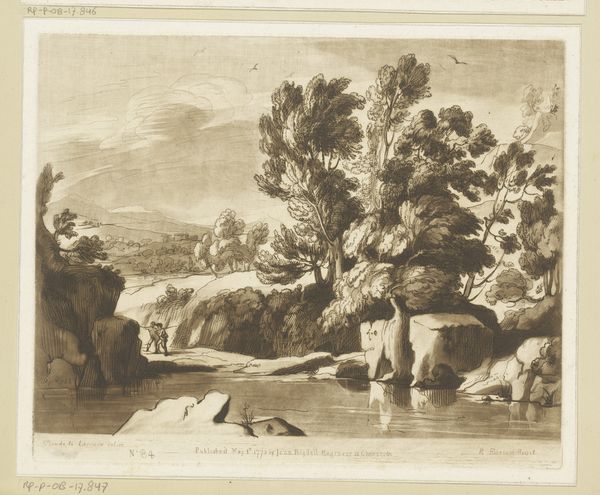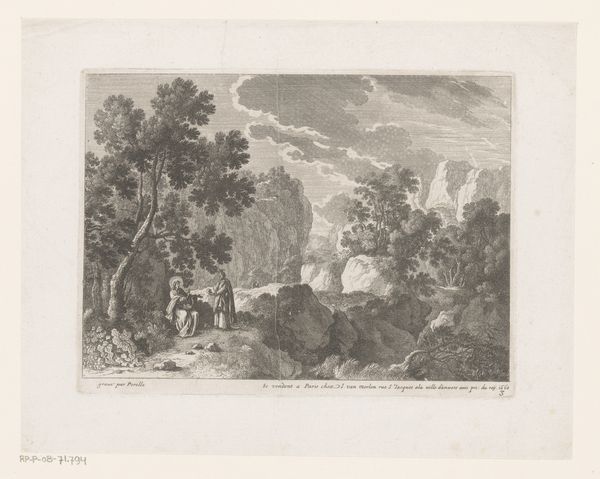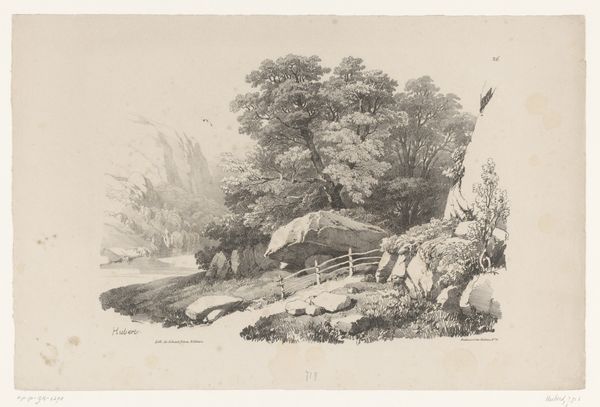
Design for Rock-work at Virginia Water, Windsor Great Park 1780 - 1790
0:00
0:00
Dimensions: sheet: 5 1/16 x 6 9/16 in. (12.8 x 16.6 cm)
Copyright: Public Domain
Curator: This is Thomas Sandby’s "Design for Rock-work at Virginia Water, Windsor Great Park," created between 1780 and 1790. The location now housing the piece is the Metropolitan Museum of Art. Editor: My initial impression is one of understated grandeur. The tonal range is quite subtle, relying on variations of gray, lending a certain gravitas to the sketched scene. It’s remarkably balanced, despite the apparent naturalism of the subject matter. Curator: Indeed, it seems a very romantic depiction of nature. I am struck by the rock formation itself. These grottoes or "rock-works," were popular features in gardens, intended as a space of refuge but also conjuring up images of prehistoric and even sacred places. Think of caves as wombs of the earth, points of transition and revelation, and places of classical myth. Editor: I see what you mean. But looking at the composition alone, the placement of the dark trees immediately behind the rock formation draws the eye right there. The light reflecting off the water creates this gorgeous flat plane, offering a sense of depth despite the limited tonal range, contrasting with the complex textures of the trees and rock. Curator: The entire image presents a curated version of untamed nature. Note the delicate touches suggesting nature slowly taking back the rock feature, vines here and there, softening its otherwise severe edges. And it’s not just about surface aesthetics; there is deeper emotional impact too. Editor: True, it reflects broader ideas in the period regarding control over nature. Yet Sandby is keenly aware of surface appearances and formal relationships. The way he renders the reflections, it is less about perfect replication and more about atmosphere, with the water texture echoing that of the trees. Curator: Absolutely, it becomes a place where, even now, the natural and man-made blend to create a stage for contemplation. You cannot experience such spaces and representations without considering the past as ever-present. Editor: Looking at the design elements specifically, I admire the use of minimal means. With the stark pencil strokes and varied pressure he achieved subtle but complex gradients of shadow and texture to capture what can’t easily be quantified, or fixed, in this landscape. Curator: Indeed, and in contemplating this image, we engage with layers of time, history, art, and thought, reflecting on our place within the continuous narrative of landscape and memory. Editor: Very well said. It’s a piece that rewards both sustained visual examination and consideration of historical and cultural contexts.
Comments
No comments
Be the first to comment and join the conversation on the ultimate creative platform.


